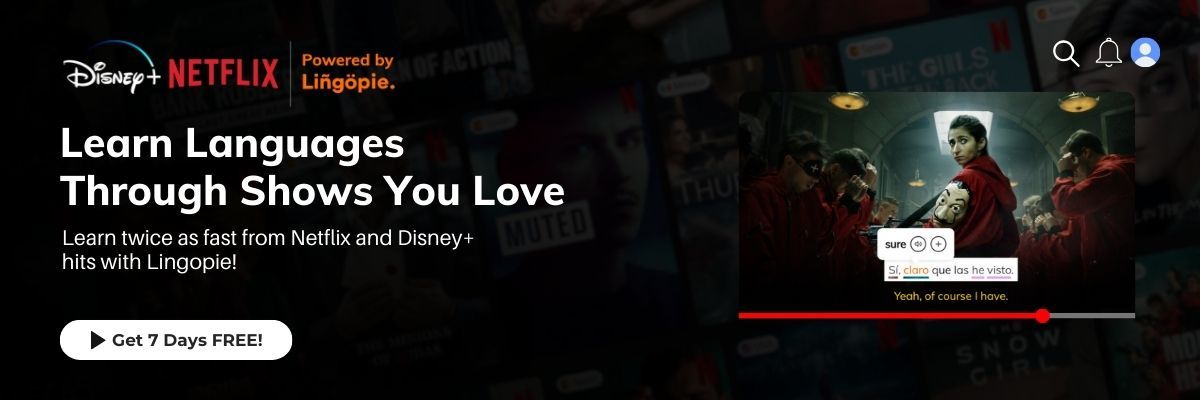Slang words and phrases are always changing, no matter the language. New expressions show up in songs, social media, and daily conversations, then vanish just as fast. What your Colombian friend said last year might already sound out of date. That is why keeping up with slang matters, especially if you want to follow real conversations and sound more natural when you speak.
In this post, we’ll go over 21 of the best Colombian slang words to learn this year. Each one comes with simple explanations, real examples, and quick tips on when to use them. Whether you’re visiting Colombia, chatting online, or just love learning how real people speak, we guarantee that these expressions will help you sound more natural and confident.
- Are You A Gabacho, Gringo, Or Güero? [Spanish Guide]
- Spanish Curse Words: 20+ Bad Words & Insults Explained
- 30 Mexican Sayings That'll Have You Sounding Like A Native Speaker

Why Colombian Slang Matters
If you’re learning Spanish and want to understand how people really speak in Colombia, learning slang is a must. For instance, slang words like “parce” (dude), “bacano” (cool), or “qué nota” (how awesome) are used all the time in conversations, on social media, and in music. If you don’t know them, even basic chats can feel confusing or awkward.
Also, studies show that understanding casual language helps learners feel more confident and fit in faster. People who know slang are more likely to follow conversations, make friends, and understand jokes or tone. If you skip slang, you’re missing a big piece of how people use the language.
Colombian Slang
1. Qué Hubo
Translation: What's up?
How to use it: This slang is used to dive into conversations effortlessly with this friendly greeting, setting a positive tone.
Fun Fact: A friendly greeting, "Qué Hubo" is not just about asking what's going on; it's an invitation to share and connect in Colombian conversations.
2. Pásame esa Vaina
Translation: Pass me that thing.
How to use it: Advice to all Colombian Spanish learners: learn this phrase for those moments when you need something but can't quite name it. Whether it's a tool, an object, or an item, this expression is your go-to for casual requests.
Fun Fact: Colombians use "vaina" to refer to a variety of things, making it an essential slang term in everyday life.
3. Es Una
Translation: That's it!
How to use it: Express agreement and understanding succinctly with this common phrase. Use it to wrap up a conversation or to emphasize a point.
Fun Fact: "Es Una" is a quick and effective way to communicate finality or resolution in a discussion. This expression can be heard in other Spanish-speaking countries as well.
4. La Fiesta
Translation: The party.
How to use it: You’re not going to Colombia without experiencing the nightlife. But this term is not just about celebrations; it signifies the lively and festive spirit of the culture in Colombia.
Fun Fact: Colombians take pride in their vibrant nightlife, and "La Fiesta" captures the essence of their love for celebration.
5. Dar Papaya
Translation: Don't make yourself an easy target.
How to use it: Grasp the importance of caution and vigilance in unfamiliar situations. Use it as a reminder to stay alert and avoid unnecessary risks.
Fun Fact: This phrase reflects the Colombian emphasis on street smarts and situational awareness.
6. El Parche
Translation: The gang/The plan.
How to use it: Seamlessly join social circles or make plans using this colloquial expression. It's an invitation to be part of the group or participate in an activity.
Fun Fact: "El Parche" is more than just a gathering; it's an inclusive term that welcomes others to join in the fun.
7. Qué Chimba
Translation: How awesome!
How to use it: Infuse enthusiasm into your conversations with this joyful exclamation. Use it to express excitement, admiration, or sheer delight.
Fun Fact: "Qué Chimba" is a spirited expression that mirrors the upbeat nature of Colombian culture.
8. Esa Vaina
Translation: That thing.
How to use it: We’ve seen it used in context already, but you can use this term on it’s own too in a range of other contexts. It’s a versatile term for “thing” or "stuff."
Fun Fact: We’ll leave you to look this one up. Check out the song “Una Vaina Loca” on the Lingopie Music Platform.
9. Muy Bien
Translation: Very good!
How to use it: Celebrate successes and express satisfaction with this classic phrase. Use it to acknowledge achievements, whether big or small.
Fun Fact: "Muy Bien" is a universally recognized expression of approval in Spanish-speaking countries. While not slang per se, nor unique to Colombia, it’s a staple in the Colombian linguistic landscape.
10. Qué Chévere
Translation: How cool!
How to use it: Express delight and admiration using this common Colombian expression. "Qué Chévere" is your go-to phrase for acknowledging something awesome.
Fun Fact: Colombians use this term to share positive vibes, creating a culture of appreciation for the cool things in life.
11. La Chimba
Translation: The cool thing.
How to use it: Explore the trendy and hip side of the Colombian language with this term. "La Chimba" captures the essence of what's currently fashionable and exciting.
Fun Fact: Staying updated with "La Chimba" is like having a front-row seat to the ever-evolving cultural landscape.
12. Papayear
Translation: To avoid unnecessary risks.
How to use it: Learn the art of caution and risk avoidance. "Papayear" is a reminder to navigate situations with prudence and avoid making oneself vulnerable.
Fun Fact: This term reflects the Colombian emphasis on strategic thinking and minimizing exposure to potential dangers.
13. Qué Pues
Translation: What's up?
How to use it: Connect effortlessly with friends using this casual and friendly greeting. "Qué Pues" is an informal way to check in on someone's well-being.
Fun Fact: This phrase reflects the warm and approachable nature of Colombian communication.
14. Chévere
Translation: Cool.
How to use it: Embrace the laid-back vibes with this colloquial term. "Chévere" is a versatile expression used to describe something positive or agreeable.
Fun Fact: Colombians use this term to convey a sense of approval or contentment.
15. Qué Más
Translation: What else? / What’s up?
How to use it: Deepen your conversations by using this phrase to ask what’s going on in an informal context. "Qué Más" is a great way to ask others to share more details about something.
Fun Fact: This expression encourages open communication and a willingness to learn more.
16. Parchar
Translation: To hang out with friends.
How to use it: Plan your social activities with this dynamic verb. "Parchar" implies spending quality time with friends and enjoying each other's company.
Fun Fact: Socializing is an integral part of Colombian culture, and "Parchar" captures the essence of shared moments.
17. Estar a la Vuelta
Translation: To be nearby.
How to use it: Coordinate meetups and gatherings by letting others know you're close. "Estar a la Vuelta" simplifies the process of making plans.
Fun Fact: Colombians appreciate the convenience of knowing when someone is just around the corner.
18. Chino
Translation: Friend or buddy.
How to use it: Strengthen your social connections by referring to friends as "Chino." This term adds a touch of camaraderie to your conversations.
Fun Fact: Terms of endearment like "Chino" showcase the warmth and familiarity in Colombian relationships.
19. Cuchi Cuchi
Translation: Cute or charming.
How to use it: Compliment someone's appearance or actions with the playful term "Cuchi Cuchi." It's a lighthearted way to express admiration.
Fun Fact: This endearing expression adds a touch of affection to interactions.
20. Chismoso/Chismosa
Translation: Gossiper.
How to use it: Navigate social dynamics by identifying those who love to gossip. "Chismoso" or "Chismosa" refers to someone who enjoys discussing the latest news and rumors.
Fun Fact: Being aware of the "Chismosos" in your circle can help you stay informed about the local happenings.
21. Hablar hasta por los Codos
Translation: To talk a lot.
How to use it: Embrace the lively conversations by using the phrase "Hablar hasta por los Codos." This expression humorously captures the art of being a chatterbox.
Fun Fact: Colombians appreciate expressive communication, and this phrase playfully acknowledges those who are talkative.
Where to Hear Colombian Slang Words and Phrases
If you really want to immerse yourself in Colombian slang and phrases, there's no better way than experiencing it firsthand in Colombia.
Engage with locals, strike up conversations, and listen to the vibrant street chatter. However, if traveling isn't an immediate option, you can still get a taste of the Colombian language through online platforms.
Visit Lingopie to explore a diverse range of Colombian TV shows and movies. Watching these authentic productions provides a unique opportunity to hear colloquial expressions, regional accents, and everyday language used by native Spanish speakers.
It's a virtual journey to Colombia, allowing you to absorb the nuances of the language and enrich your Spanish-speaking experience.

Ready to Actually Use These Words?
Learning Colombian slang isn't just about impressing people (though you definitely will). It's about having real conversations instead of sounding like you're reading from a phrase book. If this article inspired you to learn further, then you better try Lingopie!
Instead of drilling vocabulary cards, Lingopie let's you watch Colombian shows and movies where people actually use these terms naturally. You'll hear the tone, catch the timing, and start understanding when "bacano" hits different than "chévere." Plus, you can pause, replay, and practice until these words feel as natural as saying "hello."
Lingopie is like having a Colombian friend teach you...except you can rewind them when they talk too fast!
FAQs
In this section, we provide answers to commonly asked questions about Spanish in Colombia and other Spanish-speaking countries.
What is the slang for Colombians?
In Latin America, you will hear the word "Paisa" as a slang word for Colombians.
How do you say girl in Colombian slang?
In Colombian slang, you might hear "Chica" or "Niña" when referring to a girl, adding a touch of familiarity and warmth to the term.
What does listo mean in Colombia?
In Colombia, "listo" means "ready" or "prepared." It's commonly used to indicate readiness for a task or situation. However, if used with the verb ‘ser’ it can refer to being intelligent.
How do Colombians say "dude"?
Colombians might use the colloquial term "Man" or "Parce" to refer to a friend or acquaintance, equivalent to saying "dude" in English.




![20+ Gen Alpha Slang And What They Mean [Guide]](/blog/content/images/2025/06/Gen-Alpha-Slang.jpg)
![7 International Films Debuting At Tribeca Film Festival [2025]](/blog/content/images/size/w1200/2025/06/tribeca-film-festival.jpg)
![30+ Modern English Slang Terms For Money [Guide]](/blog/content/images/size/w300/2025/06/Slang-term-for-money.jpg)
![5 Official Spanish Language Tests To Show Your Proficiency Level [Guide]](/blog/content/images/size/w300/2025/06/Spanish-Language-Tests.jpg)

![Why Memorizing Spanish Words Won’t Make You Fluent [Tips]](/blog/content/images/size/w300/2025/06/how-to-practice-spanish-vocabulary.jpg)